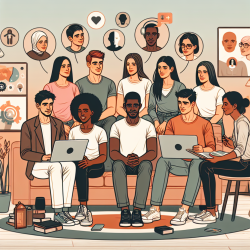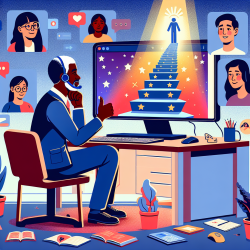Introduction
The landscape of mental health care has been rapidly evolving, especially with the advent of telehealth services. This shift has been particularly beneficial for marginalized populations, such as LGBTQ+ youth, who often face significant barriers in accessing traditional mental health services. The research article "Adapting Clinical Skills to Telehealth: Applications of Affirmative Cognitive-Behavioral Therapy with LGBTQ+ Youth" provides valuable insights into how practitioners can effectively deliver cognitive-behavioral therapy (CBT) in a virtual setting. This blog will explore key findings from the study and offer practical guidance for clinicians looking to enhance their telehealth practice.
Understanding the Need for Telehealth in LGBTQ+ Youth
LGBTQ+ youth are among the most disadvantaged populations globally, facing disproportionate discrimination and mental health challenges. The COVID-19 pandemic has exacerbated these issues, highlighting the need for accessible and effective mental health interventions. Telehealth offers a unique opportunity to reach these individuals, providing a platform for support that transcends geographical and social barriers.
Key Considerations for Delivering CBT via Telehealth
The research outlines several critical components for successfully adapting CBT to a telehealth format:
- Technology Competence: Clinicians must be proficient in using telehealth platforms like Zoom, ensuring a smooth and engaging experience for participants.
- Therapeutic Engagement: Building a therapeutic alliance online requires transparency and an affirming stance. Practitioners should acknowledge the unique challenges of online therapy and actively work to create a supportive environment.
- Cognitive Restructuring: Utilizing tools like the ABCD method, practitioners can help youth challenge negative thoughts and beliefs. The use of electronic workbooks and screen-sharing features can enhance the learning experience.
- Behavioral Strategies: Encourage participation in virtual or socially distanced activities that affirm LGBTQ+ identities. Telehealth provides a platform for conducting behavioral experiments and fostering social support networks.
Case Study: Jade's Journey
The article presents a compelling case study of "Jade," a 17-year-old non-binary youth who benefited from the AFFIRM telehealth intervention. Through structured sessions, Jade learned to identify and challenge negative thoughts, ultimately fostering a more positive self-image and developing coping strategies. This case exemplifies the transformative potential of telehealth-based CBT for LGBTQ+ youth.
Encouraging Further Research and Practice
While the study provides a solid foundation, it also highlights the need for ongoing research and adaptation of clinical skills to telehealth. Practitioners are encouraged to explore innovative ways to engage LGBTQ+ youth and tailor interventions to meet their unique needs. By leveraging technology and evidence-based practices, clinicians can make a significant impact on the mental health outcomes of this vulnerable population.
To read the original research paper, please follow this link: Adapting Clinical Skills to Telehealth: Applications of Affirmative Cognitive-Behavioral Therapy with LGBTQ+ Youth.










